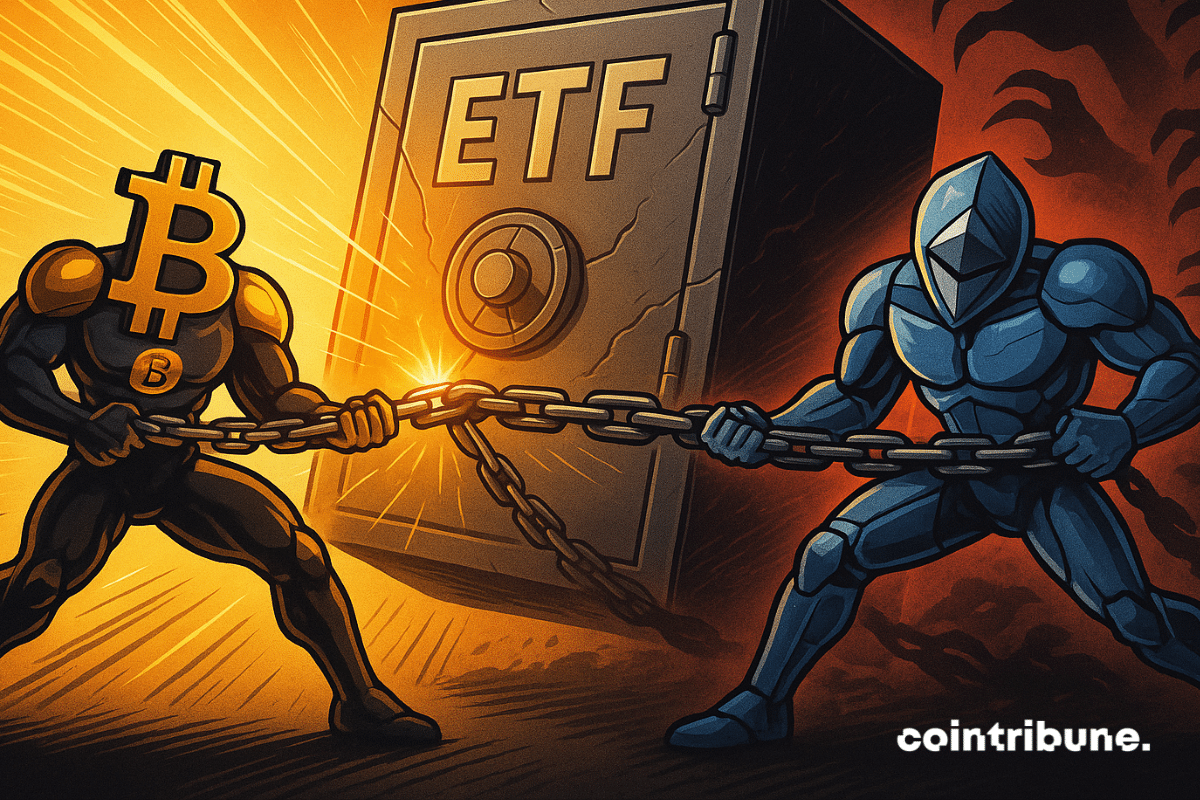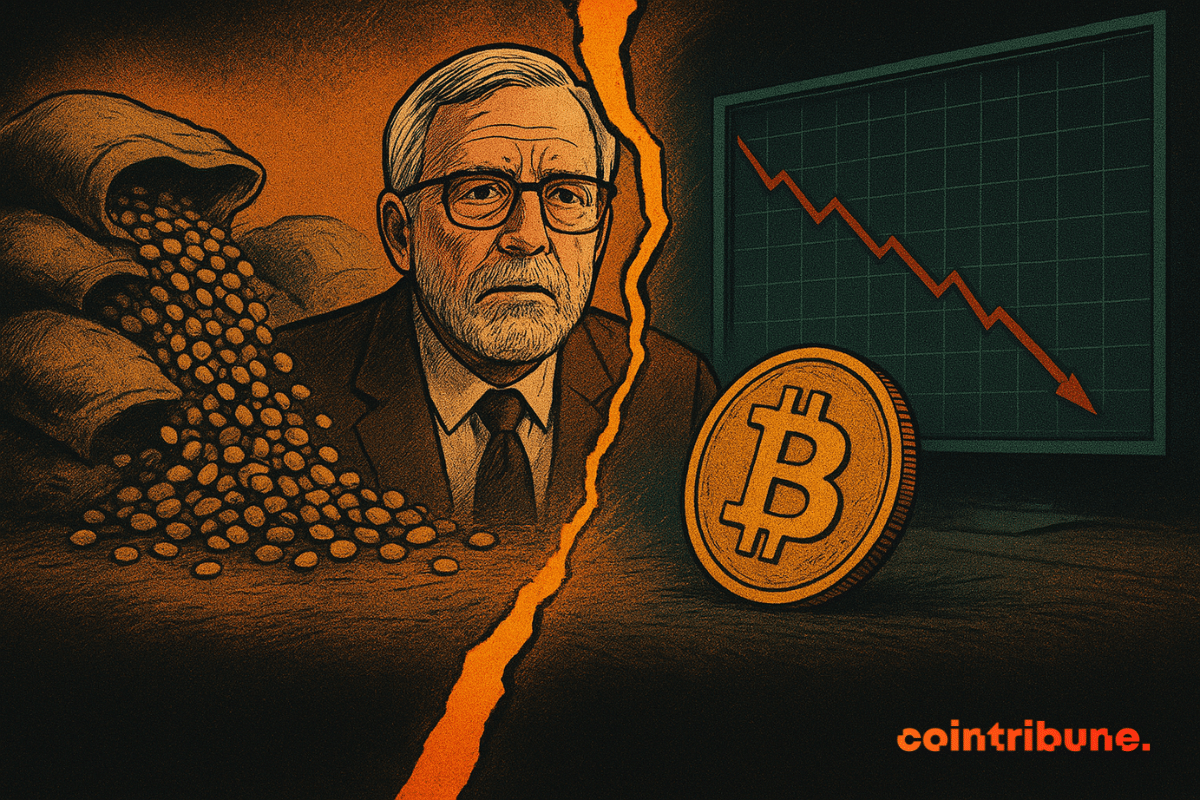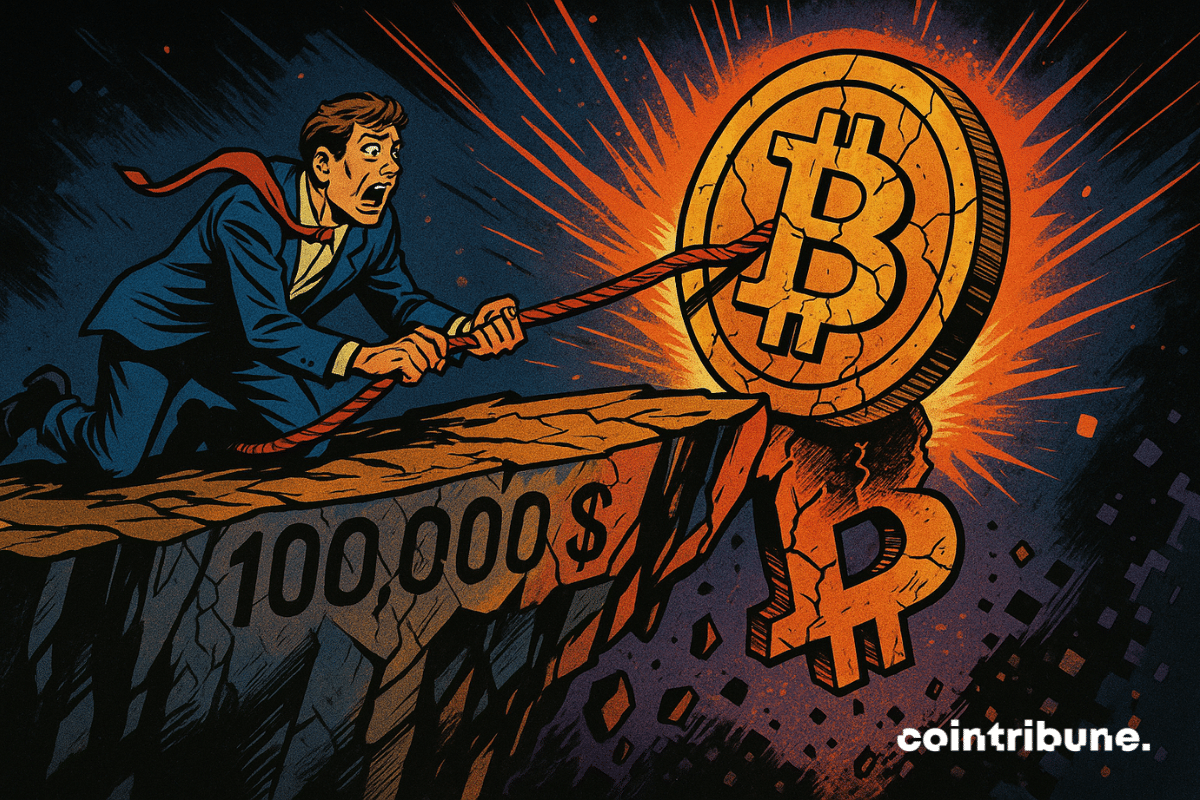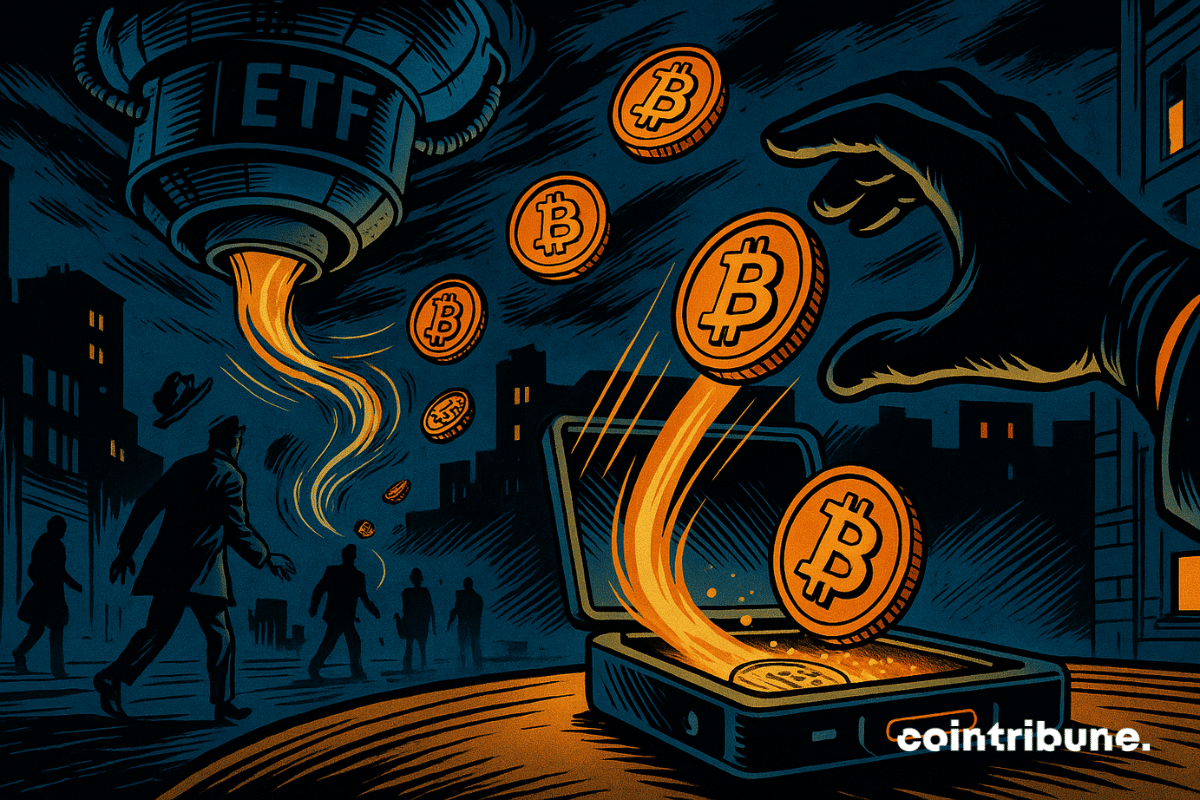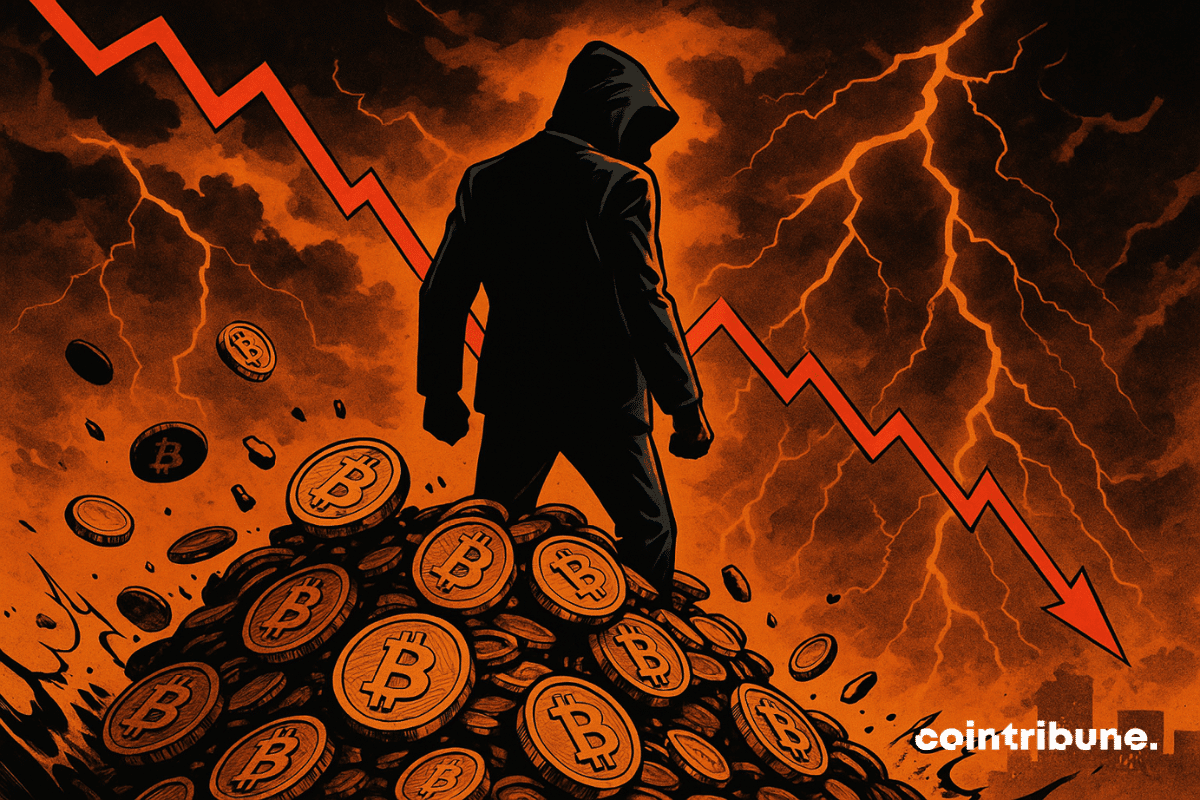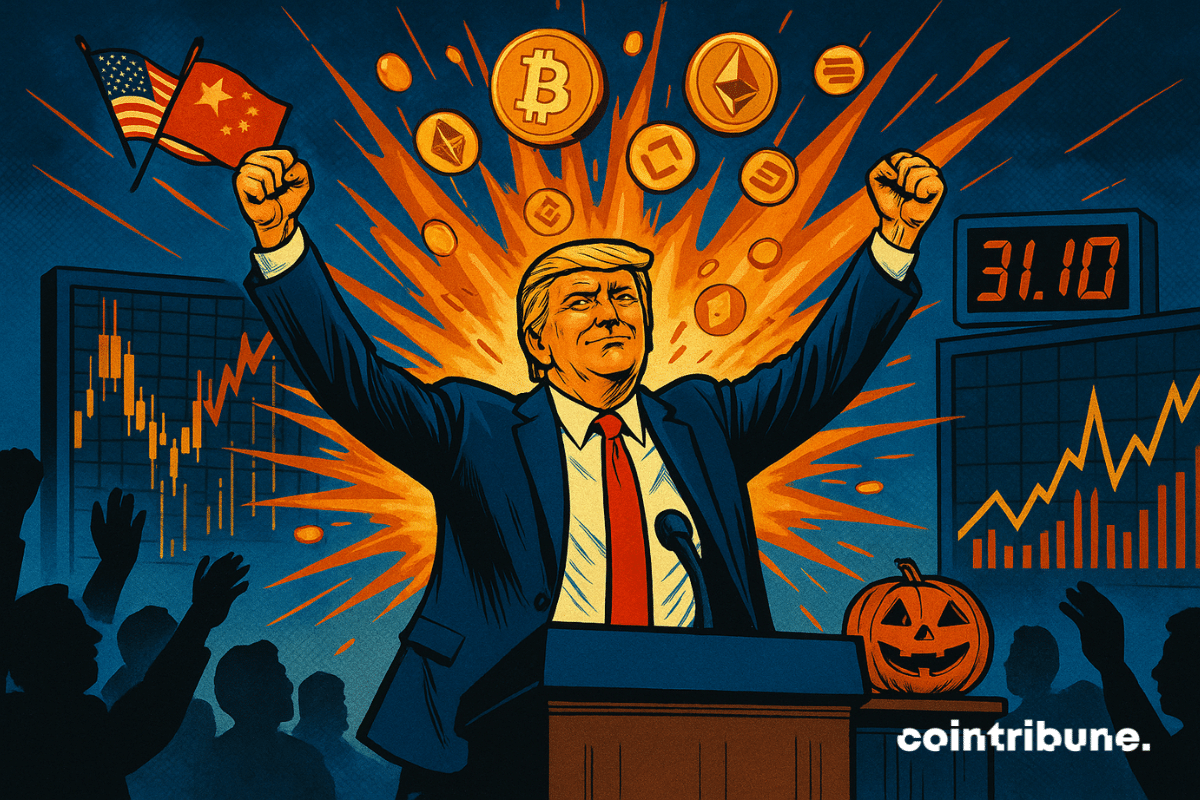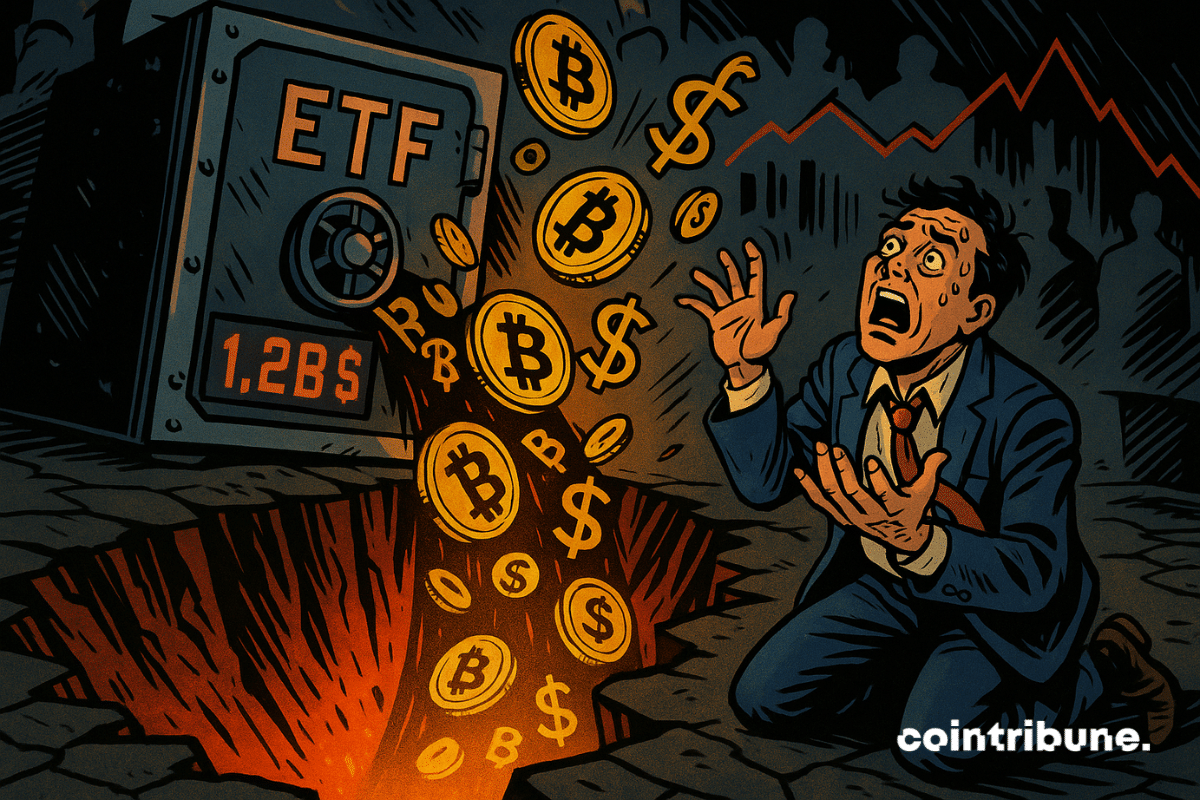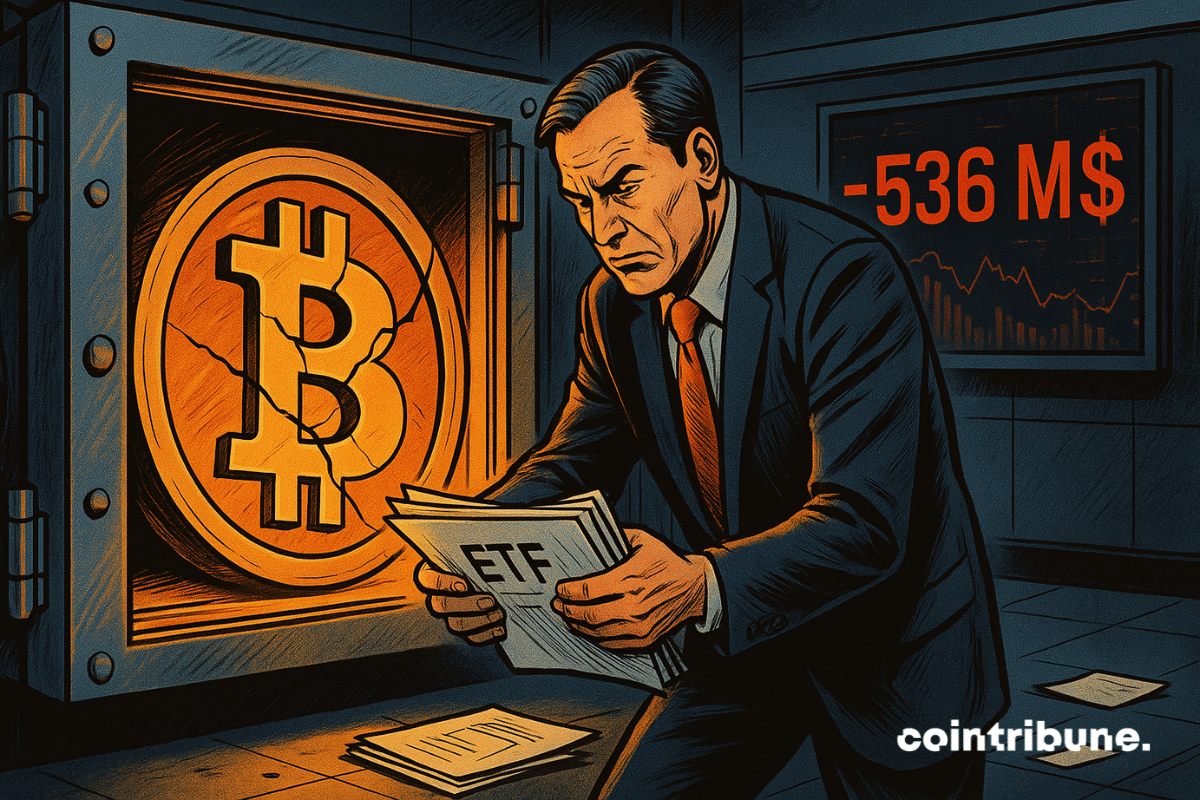After a $619M surge in Bitcoin and Ethereum ETFs on Tuesday, investor caution returned, leading to outflows the next day.
Theme Bitcoin (BTC)
American Bitcoin Corp. (ABTC)—co-founded by Eric Trump—has released its October 2025 investor presentation, marking a major milestone in its evolution from a pure Bitcoin miner to a full-scale digital-asset ecosystem. The strategy focuses on building a U.S.-based Bitcoin powerhouse to reinforce America’s leadership in the global Bitcoin market.
Bitcoin’s recent price action is drawing comparisons to one of the most dramatic commodity bubbles in modern history. Veteran trader Peter Brandt says the cryptocurrency’s chart now resembles the 1970s soybean market—an era defined by a sharp boom-and-bust cycle.
While gold crashes like a soufflé, bitcoin heavyweights enter ETFs. Golden savings melt, crypto heats up... Who stole the cash box?
The $100,000 threshold, long perceived as a strong floor for Bitcoin, is faltering. Falling to $108,938, the asset slips towards a critical zone. Geoffrey Kendrick, analyst at Standard Chartered, now speaks of an imminent break of this symbolic level. The scenario of a drop below $100,000 is gaining ground, reigniting tensions in an already pressured market.
Google claims to have reached a major milestone in quantum computing. Its Willow processor reportedly performed a molecular modeling task 13,000 times faster than a supercomputer. The announcement, supported by verifiable results, reignites the debate on the security of cryptographic systems. As bitcoin and other protocols rely on algorithms vulnerable to quantum computing, this technical breakthrough turns a theoretical threat into a concrete challenge for the entire blockchain ecosystem.
In one day, gold lost 2.1 trillion dollars, more than half of the crypto market capitalization, causing a real financial earthquake. While Bitcoin briefly took advantage of this drop to cross $104,000, its rise was quickly stopped by sales from major holders. In the end, the yellow metal falters, but the queen cryptocurrency still struggles to establish itself as a real safe haven compared to gold.
Bitcoin-focused company Strategy—formerly known as MicroStrategy—has received a “Buy” rating from Citi, with analysts highlighting significant upside potential for the stock. At the same time, the bank warned that the company’s heavy reliance on Bitcoin could expose investors to sharp price swings.
The US Department of Labor will publish inflation data on Friday despite the government shutdown. An unusual decision five days before the Fed's crucial interest rate decision. Crypto investors are holding their breath.
After months of inactivity, SpaceX transfers $268 million in Bitcoin, drawing attention to Elon Musk’s evolving crypto strategy.
The crypto market is shaking again this October 22: Bitcoin falls below $108,000, Ethereum nears $3,800. After a historic flash crash, what are the reasons for this new shock and should we fear a prolonged downward trend?
The US Department of Justice has just made the largest crypto seizure in its history. This digital fortune now triggers an intense political debate: should victims be compensated or should the national strategic reserve be strengthened?
40 million outflows from Bitcoin ETFs in one day. Should we worry about the momentum of crypto funds? Complete analysis in this article!
Jack Dorsey, Twitter’s co-founder and a long-time Bitcoin supporter, has once again sparked debate in the digital finance world. His recent post claiming “Bitcoin is not crypto” has reignited discussion over Bitcoin’s identity—whether it belongs to the broader crypto industry or stands apart entirely.
In the Sino-American escalation, a subtle lever takes on an explosive dimension: rare earths. Essential in advanced technologies, these materials become the silent weapon of a strategic duel where industrial sovereignty and monetary confrontation intertwine.
Bitcoin mining difficulty fell 2.7% while the network’s hashrate reached a record high, keeping competition fierce for miners.
Bitcoin slipped below $105K as concerns over U.S. regional banks grew, with analysts warning of a possible drop toward $98K amid market fear.
Net asset values (NAVs) in digital asset treasuries (DATs) have plunged, signaling the end of what some analysts call the “age of financial magic.” Despite the downturn, market experts believe the correction could create opportunities for informed investors to secure long-term positions in undervalued Bitcoin-linked companies.
The ghost Satoshi watches his bitcoins melt by 20 billion. Still silent, still rich... How long will the king of silence let chaos reign without a word?
When others flee, Saylor whistles the purchase: a teaser, a chart, and there goes bitcoin ready to inflate its treasure. Strategy or poker?
While the crypto market was going through a period of marked instability, a statement from Donald Trump was enough to reverse the trend. By announcing a meeting with Chinese President Xi Jinping on October 31, during the APEC summit in Seoul, the American president triggered an immediate rebound in major cryptos. In a tense climate between the United States and China, this announcement was seen as a sign of easing, briefly rekindling investor optimism.
While traditional markets wobble under macroeconomic uncertainties, the crypto sphere is not spared, especially on the institutional investment vehicle side. This week, US spot Bitcoin ETFs experienced a massive capital outflow, exceeding one billion dollars in net withdrawals, a strong signal that does not go unnoticed by observers.
A recent analysis of blockchain developer activity has revealed a strong influx of new talent across major ecosystems, with Ethereum maintaining its dominance. The report, based on data from Electric Capital, highlights shifting developer trends and growing debates over how blockchain contributions are tracked.
Russia has become Europe’s leading crypto adopter with strong growth in institutional activity and DeFi usage.
Bitcoin reserves on exchange platforms have just fallen to their lowest level in more than six years. This massive, discreet but significant movement comes as the price falls below a key technical threshold. Is this a silent accumulation or a sign of mistrust? The indicator reignites the debate as volatility persists and positions on BTC weaken.
Prediction markets are now betting against bitcoin. On Polymarket, nearly 70% of bettors believe that BTC will fall below 100,000 dollars before the end of this year. A strong signal, as crypto has just undergone a brutal correction. This shift in market sentiment, driven not by analysts but by the investors themselves, raises questions: is the bullish trend already behind us?
Bitcoin ETFs record $536M in withdrawals in 24 hours. Are investors changing course? Complete analysis here!
Cryptos are going through a storm. Bitcoin plunges more than 9%, Ethereum loses 6%, and XRP tumbles 15% within a week. Behind this debacle, a persistent belief divides investors: will the legendary four-year bitcoin cycle seal the market's fate, or is it an outdated relic in the age of institutional adoption?
American regional banks plunge back into turmoil, reviving the specter of systemic instability. As markets react nervously, bitcoin retreats, but some already see it as an early sign. For players in the crypto sector, the asset anticipates a new liquidity crisis and upcoming monetary intervention.
Ripple accelerates while the market slows down. The company is preparing a raise of about $1 billion to accumulate XRP via a SPAC backed by a digital asset treasury structure (DAT). The timing is delicate: liquidations are piling up, Bitcoin falls, and Solana loses ground. However, the strategy is clear: stabilize the supply, speak to the corporate finance world, and expand crypto token usage in payments. Let's review the stakes.
